My wife Rivka is flying out from New York for the next part of this Mittel Europe tour – a 9-day trip up the Danube from Budapest to Regensburg. So fasten your safety belts and hold on to your hats for some unexpected pratfalls along the way!

First, to call it nine days is a bit of ‘fake news.’ They count your departure from wherever as Day 1. Then the boat doesn’t leave Budapest until 10 p.m. on Day 2. You arrive in Regensburg on the morning of Day 8, and disembark by 8 a.m. on Day 9. So do the maths.
Rivka’s not due in until noon on so-called Day 1, so I’ve got time to get re-acquainted with the great Hungarian metropolis.
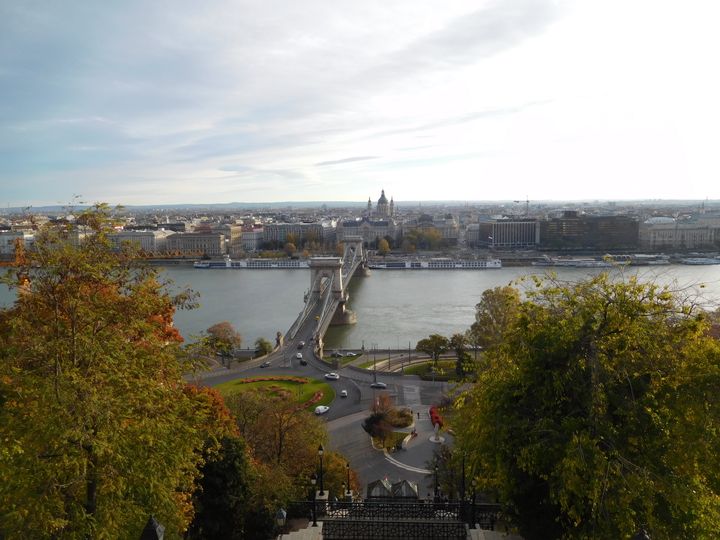

Budapest’s Keleti (eastern) station is one of the great monumental railway stations of Europe, summoning up visions of the heyday of train travel a century ago with a whiff of murder on the Orient Express, even if its more recent image relayed into sitting rooms around the world two years ago was of migrants bedding down in the underground area during Europe’s migration crisis.

So, imagine my delight and readiness to once more careen into rhapsodic evocations when I espy a station restaurant that would not have been out of place 100 years ago with its starched white table cloths and heavy-artillery cutlery.
And imagine my disappointment when on entering at 7:30 p.m. I’m curtly told the kitchen’s already closed and if I want a drink I’d better finish it in two minutes flat because they’re closing at 8.
Budapest is large and monumental but, apart from the charming Old City in the Buda hills across the Danube, and the vast late 19th century parliament on the Pest side built in so-called Gothic Revival style with rococo traits, it can be rather severe and heavy.
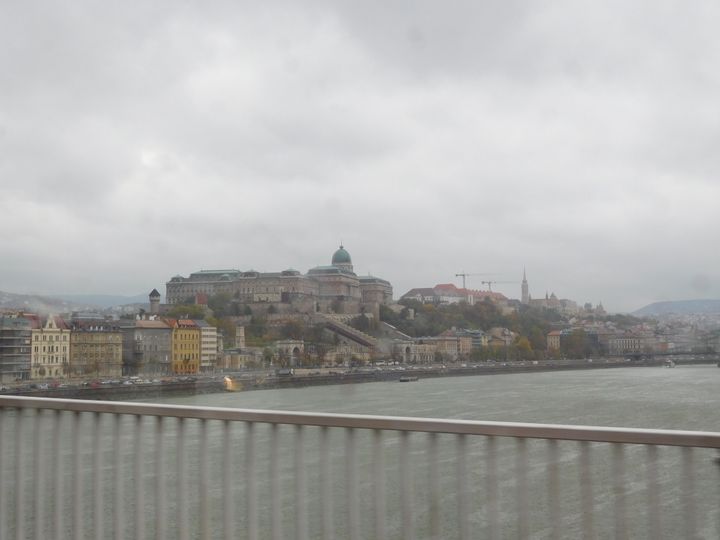
Buda from Pest on a rainy day
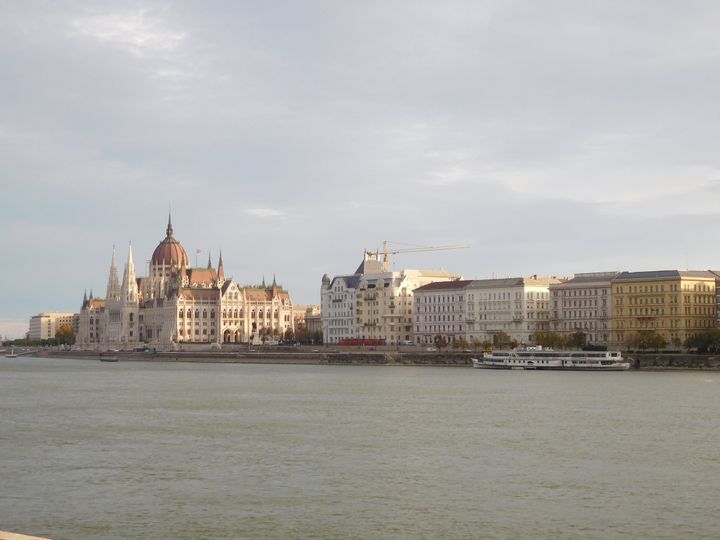
Pest from Buda on a sunnier day
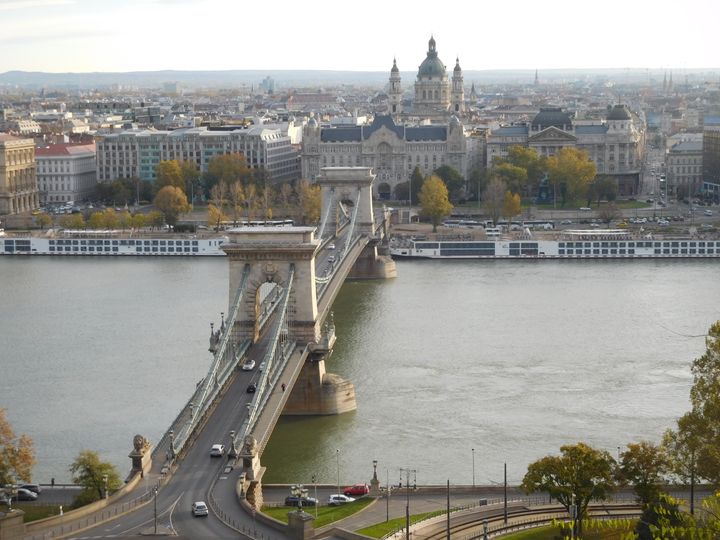
Another view
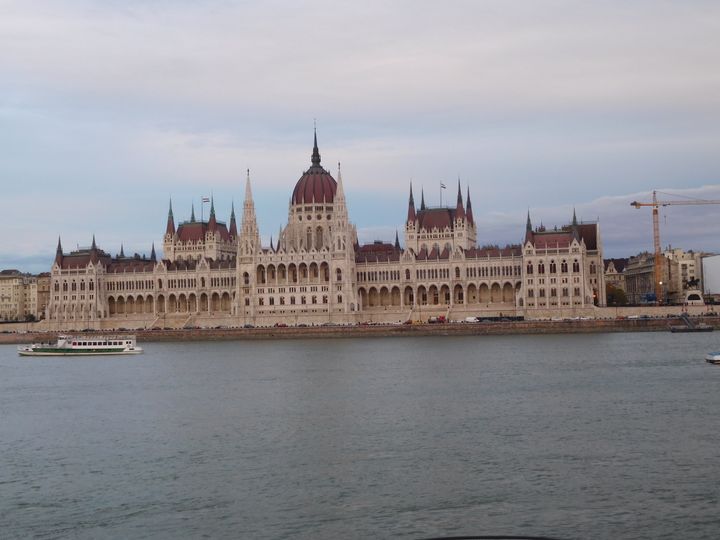
Closer view of parliament

Another view of Pest from Buda Old Town
Despite leafy areas, Pest lacks the sparkle and lightness that send Paris and Vienna levitating, partly because some of its main arteries lack trees.
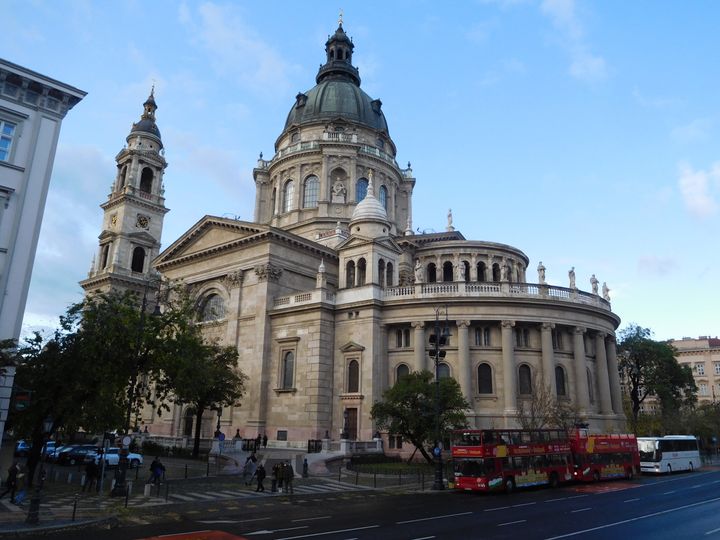
St. Stephen’s Cathedral, Pest
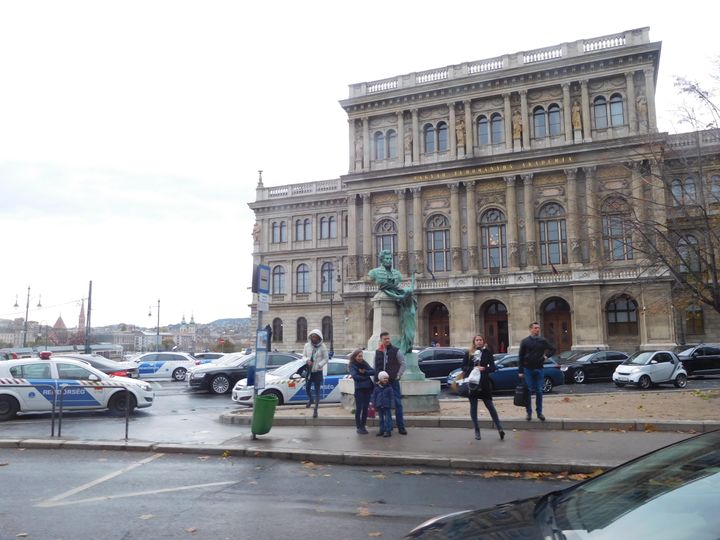
Academy of Science, Pest
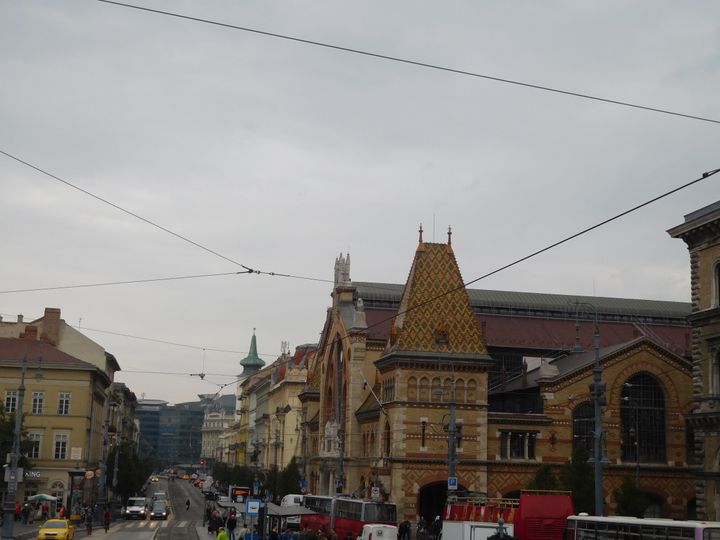
Central Market, Pest
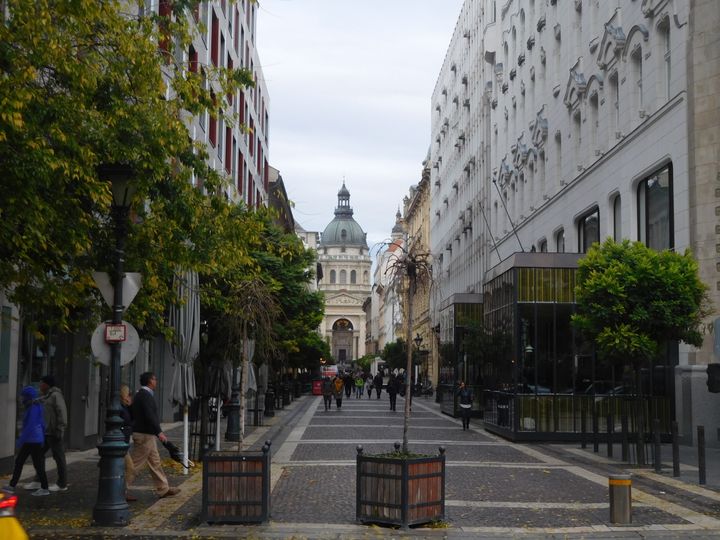
Leafier area, Pest
In Buda, the Royal Palace is massive but not particularly attractive with its large green dome.
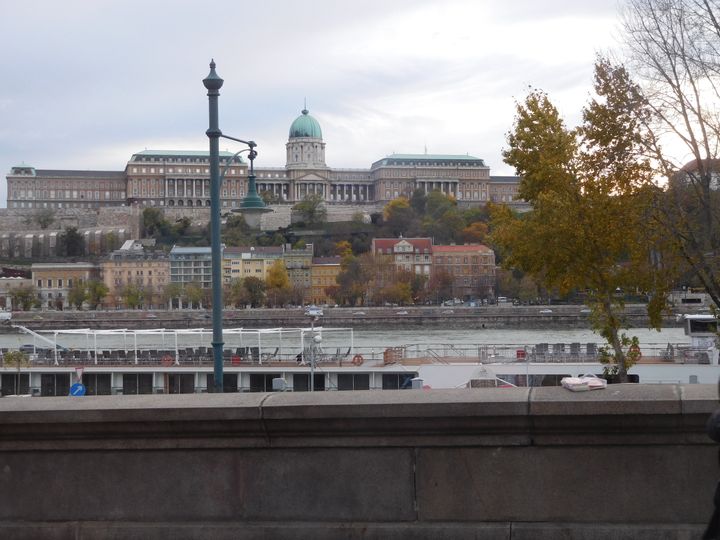
Royal Palace from Pest side
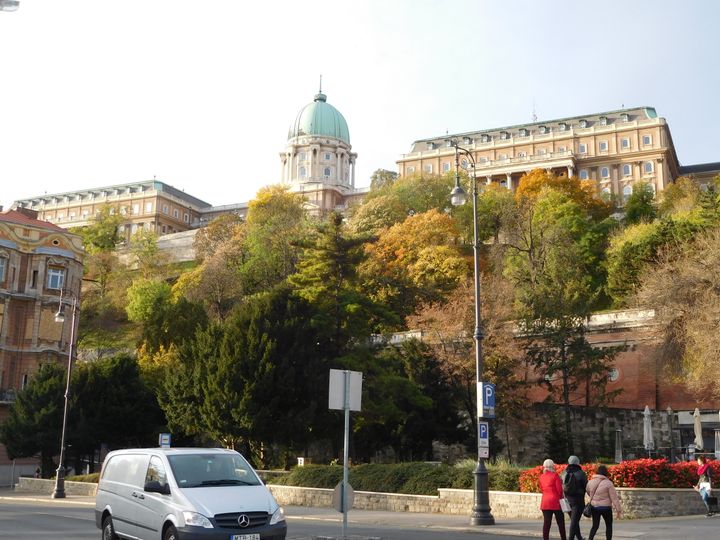
Royal Palace, from Buda
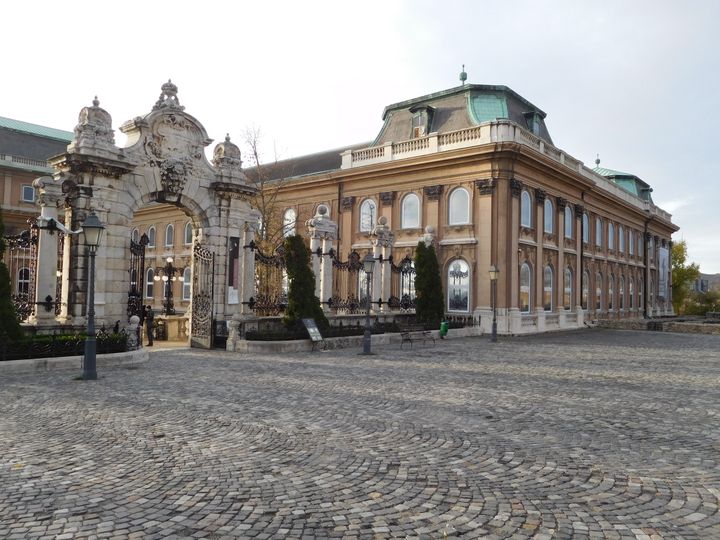
Palace close-up
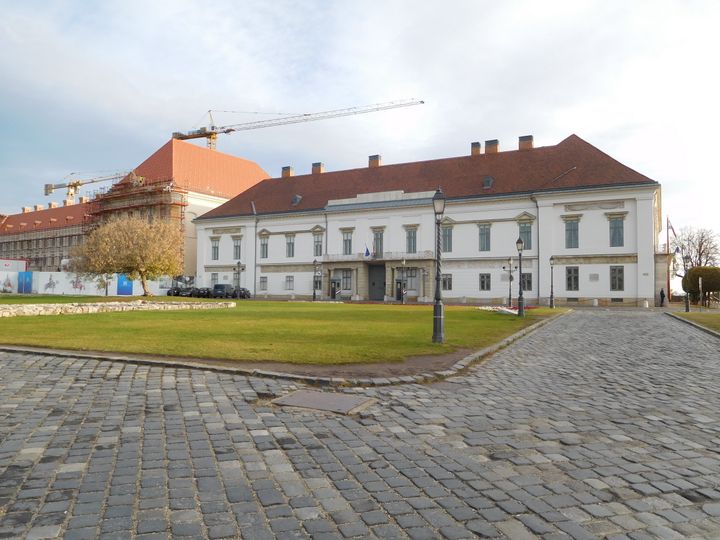
Work underway on Castle Hill

But the 14th century Matthias Church on Castle Hill, amid narrow lanes with centuries-old pastel-hued mansions, restores the charm.





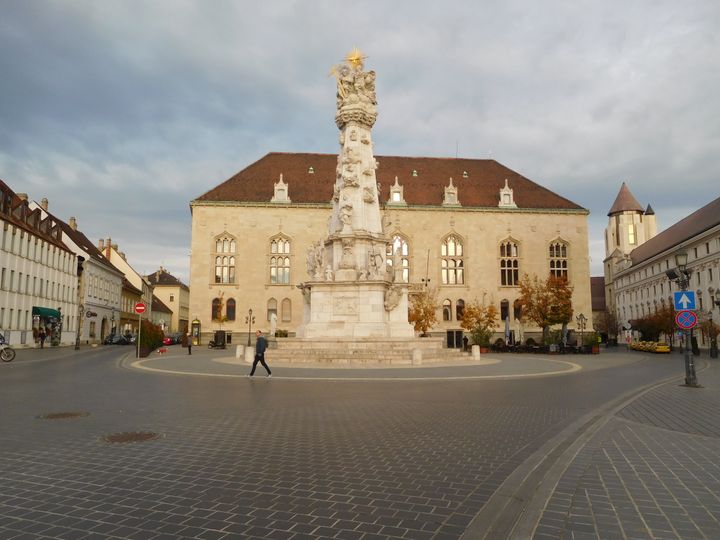
Trinity Square, column celebrating end of the plague, 1710-1713
Built in so-called late florid Gothic style on the site of a Romanesque church destroyed by the Mongols, and extensively restored in the late 19th century, its svelte gleaming white tower contrasts with the coloured tiles on its rounded turrets and roofs.


Its ornate interior served for the coronation of Austrian Emperors Franz Josef and Karl as kings of Hungary in 1867 and 1916 respectively.






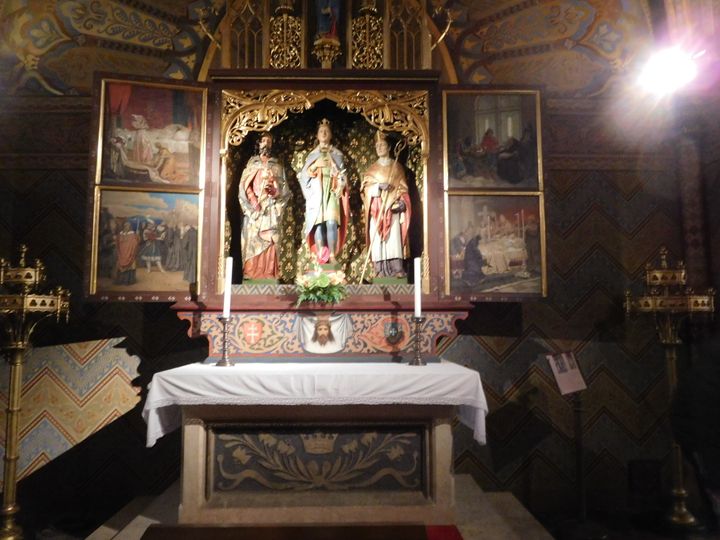


But why, oh why, was a modernist building several storeys high built right next door – and I mean right next door. It wasn’t there during my last visit 56 years ago and you’ll have to intuit the communist authorities’ 1970s machinations for this one.


Never one to forget Mammon, this Catholic church has a gift and souvenir shop right inside.

Perhaps Budapest’s most famous and photographed monument, the Fisherman’s Bastion stands right behind the church, on the edge of the ridge, with panoramic views from its battlements and through its arches across the Danube to parliament and the other domes, spires, cupolas and towers on the Pest side.




Its seven blazing-white, neo-Gothic-cum-Romanesque towers were built between 1895 and 1902 to represent the seven Magyar tribes held to have settled in the area 1,000 years earlier in 895, after gradually moving westwards from the Urals in the previous millennia. They were seriously damaged in WWII and later restored.

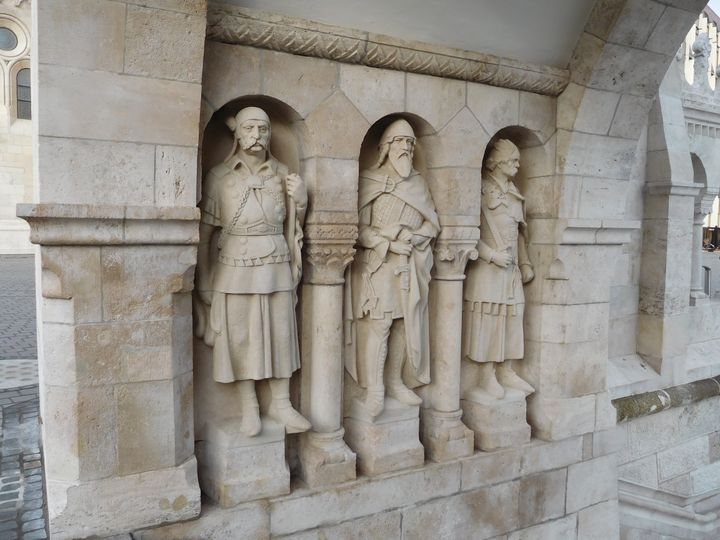



After that little tour, I’m off by metro and bus to the airport to pick up Rivka.


Against all my dire predictions, trepidations and mental resignations, she arrives via Warsaw in fine fettle, not having missed the plane at Newark airport or wandered astray in Warsaw – and with a remarkably small portmanteau.
Now we haven’t even boarded yet, in fact we haven’t even left the hotel, and Rivka’s disappeared. I suppose she feels she’s done her part by actually turning up as planned. Of course, I know where to find her. That’s right, the hotel’s souvenir shop.
After many decades of vainly banging my head against the proverbial brick wall, I’ve at last learned not to even try to stop a force of nature. And if ever there was a force of nature, it’s Rivka on a shopping rampage. I know I’ll have even less success than King Canute sitting in front of the tide.
Why, hello sea! At last I’ve learned to just go with the ebb and flow.
She comes back all smiles, arms full of gifts for the grandkids. The major question now is on which day do we buy the new case for all the new acquisitions.

Good news! There’s no shop aboard the boat – just a half window case with some rather sad-looking T-shirts.
Bad news – Rivka can still make up for lost time at our daily port stops along the way.
The vessel is long and low like all those river boats, and pretty nice, squeaky clean, with three decks, excellent food, enormous amounts of it, willing and smiling crew, and about 130 passengers, nearly all past middle age. So far nothing to kvetch about, although I’m searching hard.

Please note we’re travelling up stream, against the current – the story of my life. Rivka’s in seventh heaven. You can drink all the wine you want at dinner free, and there’s CNN on the cabin’s TV, so it’s home away from home. The cabin’s very pleasant with large picture windows and a reasonably sized bathroom compared with our previous sea cruises.
But without being cramped, there’s not much room to put the luggage, so you just stuff it under the bed. Still, I’m not kvetching, see!
But do you know what a French balcony is? It’s the term with which river cruise lines endow their better cabins. It means no balcony at all, just iron railings plush against tall windows that can be opened like French doors.

It’s like that beloved phrase of New York real estate - European Kitchen, which means no kitchen at all, just something smaller than an airplane’s galley. But still, I’m not kvetching, see!
After dinner, Rivka retires to the boudoir with a glass of free wine that she’s filched from the free-drinks-with-dinner cellar, which she then makes me carry, while I go off to the lounge for the evening’s entertainment.

Now, Yours Truly is not exactly the life and soul of such mass gatherings. It’s not that I’m a snob, it’s that I’ve got just an ever so slight touch of the anti-socials; in fact, I’m freaking well fleeing to refuge in my own mental social Siberia.
So I might be ever so slightly jaded for ‘Entertainment with Budapest Operetta.’ Everybody’s going wild over a guy in tails and a lass in a short skirt, both with their faces seemingly heavily made up, twirling around with much thigh slapping - their own, not each other’s or ours - half-way between German country dancing and whirling Dervishes.
However, their faces seem somehow out of sync with their frantic antics, either too pompously serious or with deep-freeze smiles.
We leave sharp on schedule at 10 p.m. The boat stops at towns and villages large and small on its journey upstream, doing a fair amount of the journey after dark. But here we’re rewarded with a brilliantly gilded view of the floodlit parliament building, the Royal Palace and the Matthias Church.



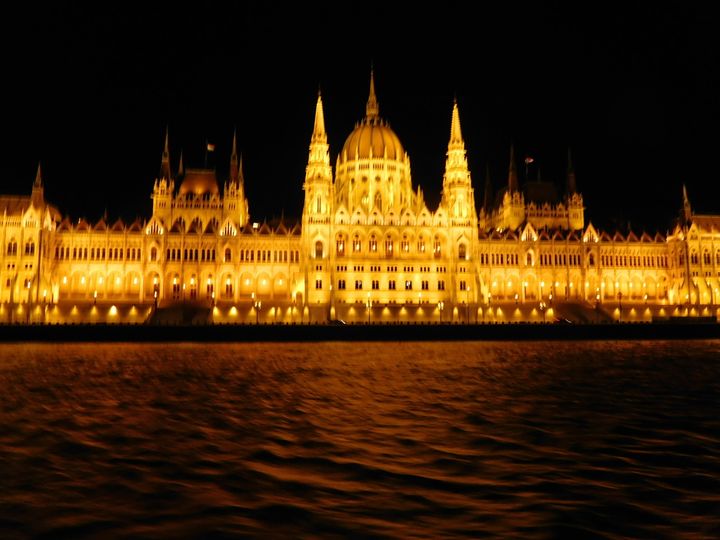
It’s well past daybreak when we reach the Gabčíkovo lock, where the Danube forms the border between Hungary and Slovakia. More massive than those on the Panama Canal, it bypasses the dam constructed in the late the 20th century to prevent potentially catastrophic flooding and generate electricity.


It’s off-season, so there’s no hours-long queue to get through. The back gates close, the water – and boat - rise 70 feet, and we come level to the 10-mile long reservoir to the right.


The top portion of the massive front wall descends below the water, the traffic light goes from red to green, and we gracefully glide through on the way to our next stop - Bratislava, Slovakia’s capital.





[Upcoming blog: Up the Danube without a paddle - Bratislava and Vienna: River boating on the Looney Front]
By the same author: Swimming With Fidel: The Toils Of An Accidental Journalist. Available on Kindle, with free excerpts at https://www.amazon.com/Swimming-Fidel-Toils-Accidental-Journalist-ebook/dp/B00IMNWV2W and in print version on Amazon in the U.S at https://www.amazon.com/Swimming-Fidel-Toils-Accidental-Journalist/dp/1496080319/ref=tmm_pap_swatch_0?_encoding=UTF8&qid=&sr=
And: Bussing The Amazon: On The Road With The Accidental Journalist; available with free excerpts on Kindle and in print version at https://www.amazon.com/Bussing-Amazon-Road-Accidental-Journalist-ebook/dp/B00KNCGD9M
